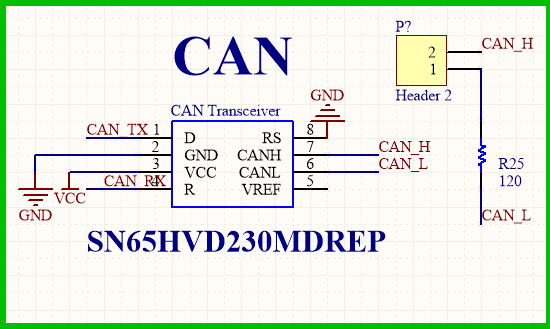Hi
I design a custom board and for CAN transceiver i used SN65HVD230. I tested can controller in loopback mode. it's working correctly. But when i measure transceiver voltage Vl = Vh = 1.5v . I know that when bus is idle Vl , Vh have to be 2.3v. please help me to find what is wrong.


